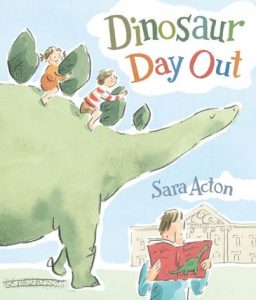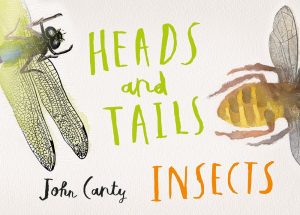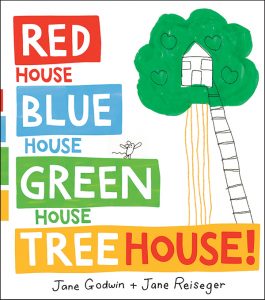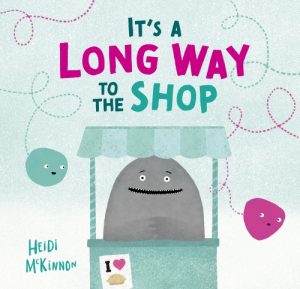It’s Book Week! To celebrate book week, schools across Australia encourage students to read, hold book fairs or promote the joy of reading through dressing up as favourite characters, just to name a few of the common events. This year’s theme is Reading is my secret power, this focus reminds students of the amazing ability that books have to transport you to another place and that reading is a powerful tool in understanding the real- and make-believe world around you.
Each year, schools and public libraries across Australia spend a week celebrating books, and Australian authors and illustrators. Teachers and librarians conduct activities relating to a theme to highlight the importance of reading.
The Children’s Book Council of Australia (CBCA)
As well as Book Week being a time to celebrate the joy of reading, it is also a time to acknowledge and promote children’s books of high literacy and artistic quality through the Book of the Year awards. Among this year’s books, there are many that provide opportunities to make connections to areas and concepts within mathematics. This blog suggests how to use some of these books to engage students in mathematical discussion and investigations based on some of the notables in this year’s competition.
Dinosaur Day Out, by Sara Acton
Dinosaur Day Out is a picture book that follows a family’s trip to the museum. The dinosaur exhibit is closed, where do the dinosaurs go on their day off? This book isn’t explicitly about mathematics but the early mathematical concept of the passage of time can be linked to this book. In the Australian Curriculum students compare and order duration of events using everyday language of time (ACMMG007). Here are a few activities to connect this book to the concept of time:
- create images/pictures to match the different events during the day from the book, after reading the book have students place them in order
- use the same images and place them out of order, ask students to discuss which ones are not in the right place and why?
- have students draw pictures that match times in the book e.g. in the morning, during the day, at the end of the day
Heads or tails: Insects, by John Canty
Heads or tails: Insects is a great book for exploring making predictions. The reader predicts what insect is on each page using the description provided and half of an image. The book uses three statements to assist students in ‘guessing’ what insect it could be. This technique can be used in a mathematical context as well, e.g. when classifying shapes or objects. In the Australian Curriculum students sort, describe and name familiar two-dimensional shapes and three-dimensional objects in the environment (ACMMG009). Here are a few activities to connect this book to the concept of classifying:
- read the book so students are familiar with predicting what insect it could be from the three statements. Play a similar game using shapes or objects, for example, show part of an image of a triangle. The three statements could be: I have straight lines, I am a shape that you may see as the roof of a house, I have three points.
- students can make their own three statements and match them to a shape or object in learning about classifying shapes and objects using features or properties
- using the images in the book or that students draw, explore halves and also the concept of symmetry
Red house, blue house, green house, tree house! by Jane Godwin and Jane Reiseger
Red house, blue house, green house, tree house! explores bold colours and provides real-world examples of classification based on colour and other concepts such as counting and comparing. There are many mathematical connections that can be made using this book to number, sorting, classifying, and comparing. In the Australian curriculum Foundation (Kindergarten) there are many descriptors within Number and Algebra that can be linked here: understanding the language of counting (ACMMNA001), connecting number names to numerals and quantities (ACMMNA002), compare and make correspondences between collections (ACMMNA289), sort and classify familiar objects and explain their basis for classification (ACMMNA005). Here are a few activities to connect this book to the concept of number and algebra:
- the pages can be explored separately where students can count the different items on a page and link them to number names and numerals
- many of the pages are set out with four images, these pages could be used as stimulus images for Which One Doesn’t Belong discussions (see wobd for more information)
- images throughout the book could be grouped into different categories (mathematically) based on colour, size, shape etc
- on the garden bed page students are asked to count the petals, do this then ask the students what else could we count on this page? how many do you think there are? how do you know?
It’s a long way to the shop, by Heidi McKinnon
It’s a long way to the shop is a cute, quirky book that follows two rocks in their journey to the shops (I found it hard not to break into some AC/DC as I read this one!). The story deals with a number of measurement and geometry concepts such as length and mass (with vocabulary such as how far, long, heavy, sink, roll), position (with vocabulary such as top, across) and even a few scientific principles you could link to Science. In the Australian Curriculum students use direct and indirect comparisons to decide which is longer, heavier or holds more, and explain reasoning in everyday language (ACMMG006). Here are a few activities to connect this book to the concept of measurement:
- read the book, then re-read the book and ask students to point out any words that describe the rocks or how they are getting to the shop. From the words students suggest, highlight words that connect to the concept of length or distance. Have students investigate these words mathematically by comparing objects e.g. longer, further away. Students can write sentences to support their investigations
- complete the above task but focus on the mass words, bring into the classroom a few rocks, let students ‘heft’ (pick up) the rocks and compare them. Students can write about the rocks using mathematical words like heavy, heavier, lighter. Students can also investigate if the rocks roll and why or why not, this also links to properties of round objects
- the book also talks about the rocks sinking, for older students explore what happens when rocks are put in water (links to displacement, volume and capacity)
I hope these activity suggestions are helpful in engaging your students in not only the wonderful world of reading to build literacy skills, but also as a way to make real-world connections to mathematical concepts. There are more connections to be made in many of the other CBCA Book of the Year categories that you can explore for yourself. Even some of the book covers themselves can be discussion starters about mathematics even if the book’s content and context do not link to mathematics (see books such as; Rhyme Cordial by Antonia Pesenti, Midnight at the library by Ron Brooks and Ursula Dubosarsky, How did I get here? by Philip Bunting, Make Believe: M. C. Escher for kids by The National Gallery or Victoria, My modern art book by Kate Ryan and Cally Bennett) For more on Book Week you can visit the CBCA website listed in the references below, follow the hashtag #CBCA2019 and their Twitter handle @TheCBCA.
References
Australian Curriculum: Mathematics, accessed from https://www.australiancurriculum.edu.au/f-10-curriculum/mathematics/ on 18 August 2019
The Book Council of Australia, accessed from https://www.cbca.org.au/cbca-book-week on 18 August 2019









